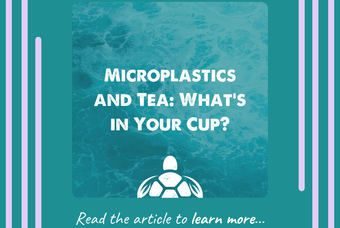The News-Hub/ Articles
Back to Articles
Recommended Articles
Natural Deodorants: A Safe and Sustainable Way to Smell Good
For many of us, deodorant is an item we use every day as part of our daily hygiene practices. It is simple and effective at keeping sweat and odour at bay and makes us smell great too! But, did you know that your innocent roll-on or favourite antiperspirant spray is not only harmful to the environment but could even be dangerous for your health?
Is Deodorant Toxic?
You may not realise but there are several chemicals found in most commercial deodorants and antiperspirants that can be harmful to our skin and our long-term health. So, which one is the worst?
First of all, we should point out that there is a difference between “deodorant” and “antiperspirant”. Deodorant is used to prevent odour, whilst antiperspirant combats sweat.
Research suggests that the toxic chemicals contained in these products can enter our bloodstream and have an adverse effect on the endocrine hormone system. The most dangerous ingredients found in antiperspirants are aluminium chlorohydrate and aluminium zirconium.
Aluminium works by dissolving into the skin tissue of our underarms, clogging the pores to prevent sweating. However, sweating is a natural and essential function for the body; it regulates our temperature and cools us down when we need it.
Underarm tissue is extremely sensitive for women (and men too) because it contains hormone receptors that produce estrogen. Applying deodorant to this area is a cause for concern after studies suggest there is a correlation between the use of aluminium-based deodorants and breast cancer. When aluminium comes into contact with breast tissue it interferes with estrogen hormone receptors, causing estrogen levels to rise. This can lead to the formation of dangerous cancer cells in the lymph nodes.

A medical study showed that women with breast cancer had high concentration levels of aluminium salt traces in their underarm skin tissue, and reported having frequently used antiperspirants since a young age. Women who used antiperspirants far less had lower levels of aluminium in their breast tissue and had never developed breast cancer.
Parabens are another harmful component found in deodorants and antiperspirants that have been linked to breast cancer. Parabens act as a form of preservative to stop natural bacteria from setting in. Whilst this is great for your product’s shelf life, it’s not so great for you. Parabens are harmful to the endocrine system because they emulate estrogen. Similar to aluminium, when parabens mix with estrogen receptors they interfere with the natural production of this hormone. Some people have even reported having an adverse allergic reaction to this preservative. Parabens can also be found in many shop-bought cosmetics, including shampoo and toothpaste but, fortunately, there are eco-friendly alternatives available that do not contain such ingredients.
A study by research oncologists at the University of Reading revealed that more than 70% of women with breast cancer had high paraben levels in their bodies. The study showed that parabens become strengthened when mixed with tissue containing estrogen and have been linked to other health issues, such as infertility and abnormal fetal development. This is because parabens can disrupt the normal function of hormone systems, which has a detrimental effect on the male and female reproductive systems.
Other health-related studies have since revealed how people with high levels of aluminium in their bodies are more likely to develop a memory-deteriorating condition, such as Alzheimer’s disease or dementia. However, at present there is no conclusive evidence to substantiate this link, with some researchers suggesting aluminium could have entered the body through other sources: it can be found in water, certain foods, cooking utensils like pots and pans, as well as deodorants and antiperspirants.
We’ve discussed how deodorants and antiperspirants can be bad for our health, but why are these products detrimental to the environment?
Why is Deodorant Bad for the Environment?
Aerosol deodorants, in particular, contain petrochemicals such as propellants that release toxic carbon emissions into the atmosphere. One of the most harmful compounds found in these spray cans is chlorofluorocarbon, which remains one of the biggest threats to the ozone layer as it contributes to the production of smog.
Fossil fuels, including petroleum and biofuels, are also released from aerosols and are non-renewable, which again is not only damaging to the environment but can be extremely harmful (and sometimes deadly) if it’s inhaled by humans, especially in small enclosed spaces.
And that’s without factoring in the environmental impacts of shipping these items, which travel thousands of miles on cargo ships, lorries or air transport, releasing harmful emissions in the process.

In addition to this, aluminium is one of the main water pollutants that has been found washed up in rivers and streams that can have a devastating effect on ecosystems. It’s a highly toxic agent that can cause harm to freshwater aquatic organisms and even cause breathing difficulties for some species of fish, especially when these toxins come into contact with a fish’s gills. Often, this can be fatal.
Triclosan is another environmentally dangerous antibacterial chemical found in deodorants, used to prevent sweat bacteria odour. When we wash this chemical off in the bath or shower, it goes straight into the water system, contaminating natural organisms such as algae, a vital food source for marine life. When algae that’s been exposed to sunlight mixes with triclosan, it becomes toxic and poses a threat for fish and land animals.

Plastic Waste
Another downside to commercial deodorants is the amount of non-degradable packaging used to encase them, such as plastic or tin, which takes hundreds of years to break down. The deodorant industry currently produces over £15 million-worth of plastic consumer waste each year and 40% of discarded plastic waste ends up in a landfill. If cosmetics brands don’t act now, it is estimated there will be 12 billion tonnes of plastic waste in landfills by 2050.
However, some cosmetics brands, such as Dove, have made a commitment to reduce their consumption of plastic waste by 2025. To achieve this goal, many brands are trialling eco-friendly practices, championing the use of refillable deodorant bottles and opting for recyclable product packaging.
Another factor to take into consideration is that, even today, many major cosmetics brands in some parts of the world still carry out unethical cosmetics testing on animals. Although animal testing was banned by the EU in 2013, the ban hasn’t been implemented in countries such as China and some states in the US. For years, People for the Ethical Treatment of Animals (PETA) have been campaigning against unethical testing of cosmetics on animals and have teamed up with a number of cosmetics brands to produce The Best Cruelty-Free Deodorants.
If Deodorants and Antiperspirants Are Bad for Our Health and the Environment, Then Why Haven’t They Been Banned?
Due to the lack of conclusive evidence linking the harmful ingredients used in deodorants and antiperspirants to poor health and environmental deterioration, there still isn’t enough proof to persuade the Food and Drug Administration (FDA) to prohibit the production of these products. However, Switzerland has acknowledged the dangers of aluminium salts after a study showed it triggered the development of tumours. As a result, Switzerland looks set to become the first country to impose a ban on the use of antiperspirants.
The European Union (EU) has a duty of care to ensure the safety of consumers but takes a “precautionary” approach towards the regulation of chemical ingredients used in cosmetics. Currently, over 1,200 ingredients have been banned from use in cosmetics in the EU and there are several hundred that are restricted. A review was due to be carried out in 2015 regarding the harmful effects of endocrine-disrupting chemicals (EDCs) currently permitted for use in cosmetics but, following delays, this review has still not yet occurred.
Fortunately, there are ways we can take matters into our own hands to avoid these negative environmental impacts and prevent adverse effects on our health.
Is Natural Deodorant Better for the Environment?
There are many eco-friendly natural deodorants available that are not just good for your skin but for the environment too. They are made from 100% pure ingredients that won’t contaminate our water systems or release harmful gas emissions into the air that contribute to climate change. Plus, they are packaged using recyclable materials.
The challenge is to shift people’s awareness towards greener, sustainable products and plastic-free living, which has less of a detrimental effect on the environment. However, the use of eco-friendly products is growing in popularity as more and more people are taking an interest in how we can protect the environment by shopping for products with recyclable symbols marked on the packaging.
Here is a guide to the best ethical consumer cosmetics brands to look out for on your next shopping trip. Natural deodorants with recyclable packaging seem the logical choice to purchase.
So, What is the Most Effective Natural Deodorant?
If you are considering switching from using an aluminium antiperspirant to a natural deodorant, with so many options available on the market, how do you decide which one will be the best for you?
Natural antibacterial deodorants are often considered to be the most effective at offering long-lasting protection against sweating, as well as combating odour-causing bacteria. Salt of the Earth has produced a wide range of deodorants made specifically for men and women. There is also a whole range of natural deodorants for kids aged 6+ available that are gentle on the skin and smell great too!
Witch Hazel is another safe deodorant alternative that doesn’t contain aluminium and other harmful chemicals. Its natural antibacterial properties are extremely effective in removing excess oil and gently tightening the pores in the underarm to prevent sweat and odour.
Neal’s Yard Remedies have also produced a natural deodorant for women that comes in a spray that is 100% natural and aluminium-free. The spray is made from soothing Aloe Vera and calming Lavender, which is an alternative preservative to using parabens. What’s more, the iconic blue glass spray bottle can be reused and recycled.
Dirty Hippie has also designed a range of sustainable, environmentally-friendly products including a natural spray-on deodorant, using bicarbonate soda to soak up excess moisture, making it one of the best natural deodorants for men.

Photo by Crystalline Salts on Flickr
Deodorant Alternatives for Sensitive Skin
Just because a product claims to be made from natural properties, it doesn’t necessarily mean that those ingredients can’t cause skin irritations to those with sensitive skin. Some people could find themselves having an allergic reaction to some of the ingredients or fragrant botanical oil used in natural deodorants, causing swelling, itching and a sore rash.
Over the last few years, there has been a growing trend for DIY deodorants that provide an alternative for sensitive skin types that actually work. They don’t guarantee to stop you from sweating but they do prevent odour. Not only are they better for your skin but they save you money too since they can be made using items found at home in your kitchen cupboards. You can tailor your product to meet your skincare needs and they smell incredible.
Homemade deodorants are often made from alcohol-based ingredients that work by neutralising sweat, rather than preventing it. Some of the best DIY deodorants use baking soda and natural mineral salts since they prevent odour-causing bacteria from developing on the body.
Another benefit to using homemade deodorants over aluminium-based ones is that it won’t leave horrible stains on your clothes, since it is aluminium mixed with sweat that causes staining. Therefore, you won’t need to replace your clothes as often, limiting your consumer waste.
Why not give DIY deodorants a try and make your own? To get you started here is a simple homemade recipe that uses natural coconut oil.

Opting for an aluminium-free antiperspirant and natural deodorant is undoubtedly the best option. Although another natural alternative could be to change your personal hygiene routine. For example, how about practising deodorant-free days, giving your skin a chance to breathe naturally. Or, if you must use deodorant, why not limit application use to just once a day, rather than applying multiple times throughout the day.
We hope you have enjoyed reading this article and that it’s given you a better insight into the dangers of artificial deodorants and antiperspirants, as well as an awareness of their damaging impacts on the human body and the environment.
Will you make the switch to using natural deodorants?
If you have discovered a natural deodorant that smells good but doesn’t harm the environment, please tell the Purple Turtle Community about it in the comments section below.
Empty content. Please select category to preview











0 comments. Write a comment